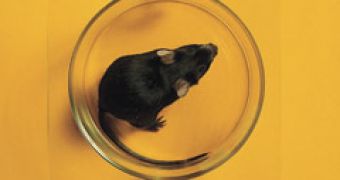You would think that if you looked really hard, some science book would eventually provide the answer to any question you might have. But this is not the case, and we're not talking about life-long mysteries like whether God exists or the precedence of the chicken and the egg. The simple questions such as why we live at 37 Celsius, what causes spontaneous combustion and why diabetic people exhale rocket fuel often remain unanswered. And most definitely, you don't really know what immortality is and where to find it.
Mark Roth, a weird but brilliant Seattle scientist, believes immortality doesn't lie in the ability to live forever; instead, it involves being somewhat already dead in terms of motion, skipping the moments when you're supposed to die: animated suspension, reducing our energy up to a point where we don’t have enough energy to die. Life is a mystery, a combustion process that burns oxygen up to a point where it becomes a toxin. The weird thing is that if the 21% of the oxygen in the air is reduced by 5%, we die, although our capillary blood only holds 3% oxygen concentration.
Roth experimented with the processes of deanimation and reanimation, that is preventing the use of oxygen until a test subject almost dies, by subjecting it to a specific chemical, and then bringing it back to life in a matter of hours or even after a day. He used poison, heavy water, carbon monoxide and hydrogen sulfide (ten times stronger than CO) and deanimated yeast, worms, mice, pigs, dogs, and stopped the hearts of zebra fish. The Pentagon's Defense Advanced Research Projects Agency contacted him in order to fund his research.
Roth's work focused on preventing people from dying from heart-attacks and DARPA's plans were similar for people that were bleeding out. His studies and use of hydrogen sulfide for deanimation purposes may yet change the standards of critical care in hospitals around the world and even more during combat. Currently, the military are testing the deanimation technique on anesthetized pigs in order to observe whether they survive being bled out. If this proves successful for humans as well, it could be applied in Iraq or similar conflict areas as emergency treatment.

 14 DAY TRIAL //
14 DAY TRIAL //